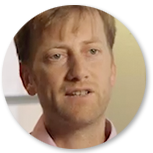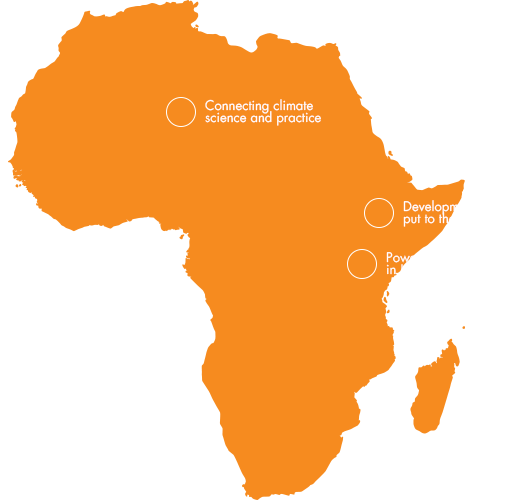

For 25 years we have been working with our partners to provide innovative thinking and research to drive sustainable outcomes. And in 2014 we've continued our tradition, generating rigorous science and solutions in response to challenges at the interface of the environment and human development.
This report presents stories about work we did last year that have helped to change minds and policy. We've used film, text and images to describe highlights of our impact at the level of global policy down to regional and local outcomes.
Of course you can also find our financial information and other data sets that give a picture of the institute in 2014. You can navigate the report by scrolling through, or use the menu on the left to jump to specific sections.
Last year we also developed a new five-year strategy, which we believe gives us the platform we need to be even more effective in our work. You can view and download the strategy towards the end of the report.
Welcome to the 2014 SEI annual report.

Sustainable outcomes require responses at the level of global policy down to local communities. SEI's work spans and connects these scales. Here you can explore three examples of our work last year that have substantial implications at the global level.



Africa's development faces many challenges, such as climate change, but there are also many possibilities, in such as urbanization and energy access. These stories illsutrate how last year SEI worked to overcome obstacles and pursue opportunities in Africa.

SEI used its "nexus" toolkit – the WEAP and LEAP tools for water and energy planning – to assess Ethiopia's ambitious development plans in terms of their impact on food, energy and the environment.
In a series of workshops, SEI worked with local planners, scientists and NGO staff from the agriculture, energy, water and environment sectors to develop three scenarios. One was a business as usual path, the second followed the government's national growth plans, and the third took a nexus approach. The work revealed that, by not taking sufficient account of the links between sectors and resources, the government's plans may not be sustainable or achievable without a toll on human well-being and ecosystems.
The nexus scenario gave greater priority to sustainable resource use and incorporated rich data on how use of one resource can impact on others, and performed better than the government's growth plans.
SEI's work has helped to build up and facilitate dialogue in the region, giving planners, policy-makers, civil servants and the NGO community a better understanding how resource-use connects across sectors and links to development choices.
For example, energy workers have a clearer understanding that if more water is used upstream for irrigation, there is less water available to produce energy for hydropower. And there is a clearer perception in the agriculture sector that without expanding access to electricity, the need for woodfuel increases, impacting on food production.
The outcomes were so positive that the Amhara National Regional President's Office has called for further support from SEI in implementing current policies and develop new ones.
SEI informs local and national government efforts to make Kenya’s new energy policy better meet local needs.
The 2010 Constitution of Kenya devolved a range of powers to the county level, including energy planning. Devolution is seen to offer opportunities to redress imbalances created by a centralized approach to planning, including the neglect of the household sector, which accounts for most of the country’s energy demand.
However, devolution is no guarantee of more appropriate energy planning – if devolved systems do not effectively engage communities, then understanding of local needs will remain limited.
To address these issues, county governments in the Lake Victoria Basin region called on SEI to develop a framework to support local participation in county level energy planning. Planning remains ad hoc in the area, with little community participation and based on limited data. In 2014, in partnership with Migori County and Practical Action, SEI carried out a study of household energy consumption patterns and potential avenues for community participation in energy planning processes.
The study points areas in which where government can act to improve participation in energy planning at the county level, including taking advantage of growing interest within communities on energy issues; leveraging existing channels through which communities make their voice heard, such as women’s groups and youth groups; and collaboration and discussion between county directors of energy. Greater coordination between county and national government and adequate resources from national government are also vital.
The study’s findings and its methodology are now being used to inform the work of national and county authorities, and SEI is working to create a flexible tool that other counties can adopt and adapt as appropriate.
SEI and Oxfam generate recommendations for major project on climate change adaptation in semi-arid regions.
In 2014 SEI Oxford worked with Oxfam GB to identify the knowledge needs of adaptation practitioners in semi-arid regions of Africa and Asia.
Oxfam is a lead partner in the Adaptation at Scale in Semi-Arid Regions (ASSAR) project, which aims to better understand the barriers and enablers to widespread and transformative adaptation at multiple governance scales in semi-arid regions.
For the first time, SEI’s weADAPT platform was used to survey practitioners to pinpoint what information they need to enable communities to adapt more effectively to climate change, as well as what barriers exist to taking effective adaptation action.
Survey results will feed in to ASSAR's Research into Use (RiU) approach, focusing on dryland areas across four of Africa’s five regions, and in Central and South Asia.
Practitioners identified the lack of effective, participatory governance, institutions, and enabling environments as the biggest barrier to implementing adaptation actions.
SEI and Oxfam also created a new interactive space on the weADAPT platform to help practitioners and researchers collaborate and share knowledge for the life of the five-year project.
Asia's rapid development is placing great pressure on its natural resources, while climate change is adding to the burden. Our research and analysis supports the efforts of governments and NGOs in the region to govern resources sustainably, to manage disaster and adapt to climate change, and to cope with the impacts of economic and social change. Here are a few highlights of our wide-ranging work in Asia in 2014.

SEI findings point toward a sustainable palm oil industry in the Phillippines
The first oil palm seedlings were planted in Palawan in 2007, and in 2011 an area of around 3,500 hectares was under harvest. We documented the venture to provide a rich and unique picture of a palm oil project in its infancy, and worked with the local government on designing more effective policy.
While the palm oil sector can offer income to cash-strapped local governments and landowners looking to improve limited livelihood opportunities, any large-scale land conversion and centralization of productive control carries social and environmental risks, and the budding industry in Palawan is a case in point. Smallholder cooperative farmers reported contractual deception and food insecurity, and others complained that indigenous peoples have been dispossessed of land. Environmental groups also reported illegal logging, substitution of food crops for oil palm, and problems with pests.
Neither is it always clear to whom the net benefits of such projects accrue. Our research made this transparent, and asked whether local institutions are equipped to manage the agro-industry and safeguard the interests of communities, other stakeholders, and citizens in general.
We also focused on corporate accountability, and how to develop effective policies and institutions to govern the emerging palm oil industry and its impacts while balancing competing interests.
We offered a space for smallholder farmers to help them renegotiate contentious out-grower contracts, and supported dialogue between local NGOs and government staff so that grievances could be openly appraised. We also ran a seminar in Puerto Princesa City with members of the provincial and local government. The aim was to share the findings of the research, consolidate the results, and receive feedback on 10 action points for how the provincial and national government can better manage palm oil for all.
SEI fosters strong partnerships with the Government of Myanmar and the Myanmar Environment Institute to support sustainable development objectives.
Myanmar is experiencing rapid economic development and growth, heightening the need for effective environmental governance and natural resource management.
SEI is working in collaboration to support integrated water resource planning and management in the Ayeyarwady River basin. The basin is a vital ecological resource that is crucial to livelihoods throughout Myanmar.
Together with the Directorate of Water Resources and Improvement of River Systems, the Secretary of National Water Resources Committee, the Myanmar Environment Institute, and others, SEI is focusing on the most critical and strategic issues for decision-making on water management.
The Ayeyarwady Futures initiative is designed to support sustainable development in Myanmar through evidence-based participatory planning processes.
SEI has identified tools, systems and actors to support decision-making; developed hydrological models to assess water flows; and built capacity among key stakeholders and leaders.
Ayeyarwady Futures is improving assessments, dialogue and processes that affect management of the Ayeyarwady watershed.
SEI exploits new tech to share knowledge on climate change adaptation in Indonesia and the Philippines
Adaptation planning gives small island communities an opportunity to increase their resilience to climate change.
Additional knowledge and technical skills can boost community preparedness and adaptation planning, although delivering this training to communities, at scale, across the globe is highly problematic.
The context of adaptation planning is different in each community depending on physical factors, such as geography, local climate and resource availability, as well as social factors, including demographics, language and education levels.
SEI is grappling with these challenges by developing and testing responsive or ‘demand-driven’ training that can be delivered remotely.
SEI Oxford and SEI Asia are collaborating with local institutions in Asia to develop and test innovative learning techniques.
In 2014 we worked with the Santiri Foundation in Indonesia and Silliman University in Philippines to provide training in community-based adaptation to participants via the web in each of these countries.
The evolution of mobile technologies and the Internet’s expanding reach provide new opportunities to deliver training, although connectivity issues and differences in language, culture and pedagogy still present challenges to the disseminating knowledge.
SEI is capitalizing on opportunity and actively confronting challenges to better support locally relevant climate adaptation initiatives in communities across the globe.

Water resources and climate change are two of our biggest areas of engagement in the Americas. Here you can see just three examples of how last year we made a difference on these issues in North and South America through analysis, co-learning and software development.
Climate policy and analysis often focus on energy production and consumption, but they seldom examine the implications of major energy infrastructure investments – coal export terminals, oil and gas pipelines – for our future energy systems, energy use, and the resulting greenhouse gas emissions.
Keystone XL has helped change that. The pipeline, which would carry up to 830,000 barrels of oil per day from the Alberta oil sands to the Gulf of Mexico, requires President Obama’s approval to go forward. Concerned about the scale and symbolism of the project, climate activists rallied in opposition, and the President pledged not to approve Keystone XL unless it does not "significantly exacerbate the problem of carbon pollution".
The pipeline’s emissions implications have been hotly debated since, with some arguing that the GHGs associated with all the oil it would carry should be counted, and others countering that Keystone XL would simply provide a safer, more efficient way of transporting oil that would reach the U.S. anyway.
Keystone XL is only one of many major fossil fuel supply investments on the table in the U.S. and around the world, most of which are barely discussed in the context of climate change. Aiming to start filling this gap, in 2013, SEI launched a two-year project to examine the implications of these investments for global GHGs – including different ways to gauge these projects’ impact.
As part of the project, SEI-US Senior Scientists Michael Lazarus and Peter Erickson decided to analyse the GHG implications of Keystone XL, focusing on a key issue that had mostly been ignored in the debate: the potential impact of the pipeline on expanding oil supplies, prices, and thus on oil consumption and resulting GHGs.
"We found that, for each barrel of Keystone XL oil that represented increased Canadian oil sands production, global oil consumption would increase 0.6 barrels" says Erickson. "Depending on the extent to which the pipeline leads to greater oil production, this could lead to an increase of virtually none to as much as 100 million tonnes of CO2e per year, or 1–2% of current U.S. emissions. Though the uncertainty is large, this market impact warrants serious consideration."
The team preparing the State Department’s own impact assessment read the SEI analysis and cited it as the only such calculation of Keystone XL’s impact on global oil supplies.
Lazarus and Erickson further refined their analysis and published it in Nature Climate Change, which dramatically increased the paper’s impact, through scores of media stories and responses, and in-depth discussions with key experts involved in the policy debate. The analysis continues to be widely cited, and SEI has since advised government agencies and NGOs on how to consider the fuller ramifications of a broad range of policies and investments in oil, gas, and coal supply.
Exchange trips for water resource managers are so successful at building capacity and learning that they are developing into long-term alliances between water professionals in California and Colombia.
Since 2009, SEI has enabled water officials in Latin America to come to the U.S. to exchange learning, build technical capacity, and share experiences in water management.
In 2014, two groups of water professionals from different Colombian watersheds visited SEI’s Davis office in California. They included representatives of Colombian universities, local government officials, and water utility managers, all involved in research and policy-making on water resources.
The exchange trips involved in-depth learning about SEI’s tools, particularly its water planning software WEAP, as well as training in how to visualize the results of the tools to better inform non-technical decision-makers. The programme also included visits to university departments, local water agencies, as well as Californian state water planners using SEI tools at a time of unprecedented drought.
The programme enables participants and SEI staff to identify parallels in watershed management, to share new ideas and perspectives and discuss ways to apply this learning in different local contexts. Typically, one participant summed up the exchange as "an excellent and enriching experience professionally, and the knowledge I gained will be shared in my work."
The exchanges have proved so successful that SEI has moved to set up more permanent long-term partnerships between local water agencies in California and Colombia, with a view to sharing ideas and experiences more deeply and improving water resource management in both regions.
SEI’s powerful planning tools help communities in the Andes to manage water resources at a time of climate uncertainty
In the Andes region the impacts of climate change and other development pressures pose major challenges to managing water resources. Through constant iteration, experimentation and practice, SEI has developed a decision-making process (known as Robust Decision Support, or RDS) and a powerful software tool, WEAP, to help governments make the best possible decisions around water management in the face of climate change and other uncertainties.
In 2014, we used these tools in three major watersheds in Colombia (Rio La Vieja, Alto Magdalena and Magdalena-Cauca). Through workshops, technical training, and briefings, SEI has helped improve water management in the region, and forged strong working relationships with universities, water and energy utilities, local government officials and other stakeholders, such as coffee farmers. Through this collaboration we have further strengthened our tools by integrating factors such as environmental flows and flooding routines into the modeling.
As a result, our tools, software, and climate data are increasingly being adopted in Colombia’s water management plans at local, state and national levels. In Peru, the formal national guidelines for river basin plans now advocate the use of WEAP and RDS, and SEI has also been called on to share its expertise in similar processes in Bolivia, Ecuador, Argentina and Chile.

SEI has a substantial presence in Europe, with centres in Stockholm, York, Oxford, and Tallinn. This selection of our work last year shows how our analysis has impacted on policy and how we're taking innovative approaches to research.
In 2014, SEI began using unmanned aerial vehicles, or drones, for scientific research.
Remote-controlled drones are becoming increasingly affordable and accessible. They provide a new and exciting frontier for scientific inquiry.
Drones can be used as close-range remote sensing platforms. Customizing the aircraft with sensors affords researchers an opportunity to gather and map a wide variety of environmental data including air pollution, heat mapping and surveillance of flora and fauna.
SEI’s first application of this technology was to assist the Yorkshire Arboretum, an outpost of the Royal Botanical Gardens, Kew – the world’s largest collection of living plants.
The arboretum holds more than 7,000 trees from temperate regions. The trees are tagged and linked to a digital database although there is no spatial record, or map, that links the physical location of trees to their information in the database. That is, until now.
To solve the problem SEI deployed a ‘quadcopter’ style drone fitted with digital imaging equipment. The aerial surveillance captured image of the gardens. These were referenced to highly accurate differential GPS survey control points. The information was then stitched together, much like quilting, using specialised software.
The process created a refined base map, which volunteers then used during field surveys to correlate tree tags and their position on the map.
The arboretum is able to use the map data both for visitor information and as a management tool.
The solution developed by SEI was more accurate and offered significantly greater potential than simple satellite mapping technologies, such as Google maps. The project with the Yorkshire arboretum is ongoing, although the drone deployment, in this instance, has afforded impressive results and the opportunity for SEI to earn its wings and take flight in the name of scientific research. There is huge potential for further deployment of aerial sensors and imaging equipment in SEI research.
In November 2013, world leaders at the UN Climate Change Conference in Warsaw (COP19) laid out a path to a major new climate agreement, to be completed at COP21 in Paris in December 2015. The agreement will take a "bottom-up" approach, with each Party to the United Nations Framework Convention on Climate Change (UNFCCC) choosing how it will contribute to the global effort.
Norway has relatively low emissions for an industrialized country, but as a very wealthy country whose prosperity has come to a great extent from fossil fuel extraction, it arguably has considerable responsibility for the climate problem as well as capacity to help address it.
So what is Norway’s "fair share" of the global climate change mitigation effort? That is the question that Norwegian Church Aid (Kirkens Nødhjelp) asked SEI and EcoEquity to help answer, aiming to inform ongoing policy debates and provide science- and equity-based arguments to encourage Norwegians to raise their climate ambition.
SEI and EcoEquity have been working on these issues for years, producing analytical tools, the widely used Greenhouse Development Rights framework and, most recently, the Climate Equity Reference Calculator, which allows users to explore different approaches to equity in the global climate regime and how they translate into each country’s "fair share" of the emission reduction effort required to science.
The tool uses straightforward quantitative indicators to calculate each nation’s “fair share”, based on the user’s perspective on key equity issues such as, what is historical responsibility? And how do we define a nation’s “capacity” to contribute to global mitigation?
"The success of the Paris agreement will depend on whether countries’ pledges will instil confidence in other countries and lead to a virtuous cycle of increased ambition, or the opposite," says Sivan Kartha, a senior scientist in SEI’s U.S. Centre. "Our calculator is designed to help decision-makers and civil society understand how the pledges compare to the effort required for a 2°C pathway, and how much each country could be reasonably expected to contribute, given its share of global responsibility and its economic resources."
The Norway study was the first high-profile application of the calculator. Norwegian Church Aid chose settings reflecting a range of ethical and empirical considerations. The calculator showed that Norway has nearly 1% of the global responsibility and capacity, even though it has less than 0.1% of the world’s population, so its “fair share” of a global mitigation effort consistent with a 2°C pathway would be more than 320 million tonnes CO2e in 2030. This would be a nearly 600% emission reduction below 1990 levels by 2030, which of course is unfeasible. Instead, the team noted, Norway could make its contribution by combining sharp domestic mitigation efforts with international technological and financial support for mitigation efforts in other countries.
The study and a public discussion of its findings with the Minister of Climate and Environment and three MPs helped bring climate equity to the forefront of Norwegian policy debates. It was covered in more than 60 media stories, and was the basis of a written question by an MP to the minister, which legally requires a direct response in a Parliamentary session. Norwegian Church Aid continues to use the report and the Calculator in its advocacy and awareness-raising efforts.
The Sustainable Transport Report recommended an energy labeling system for all new cars sold in Estonia. In 2014 the Ministry of Environment prepared an act to put the labeling into practice.
According to the report, new cars registered in Estonia consume approximately 20% more fuel than the average across the EU. More than half (51%) of these new cars show no improvement in fuel efficiency compared those entering the market 15 years ago. The EU’s 2010 report on the monitoring of CO2 from new cars showed that 65% of new cars in the EU are relatively fuel-efficient, falling into the A-C energy classes.
Although there is greater choice for fuel-efficient cars in recent years, it is still not possible to search for cars online according to CO2 or fuel economy indicators in Estonia.
SEI and its partners evaluated the Estonian transport system and mobility trends and made recommendations for a more sustainable transport policy, and last year the Estonian Ministry of Environment prepared the draft act of energy labeling for cars.
The aim of the new labeling system is to inform and influence customer choice towards more fuel efficient vehicles. The analysis was based on the EU’s sustainable transport indicators, and drew comparisons with the EU average and trends in neighbouring countries. The report showed that transport policy in Estonia did not support the achievement of EU-level commitments to improve transport energy efficiency or limiting greenhouse gas emissions by 2020. At the same time, Estonia has great potential to increase transport energy efficiency and to develop a more sustainable transport system.
journal articles produced by SEI last year
of the more than 3.8 million peer-reviewed articles ever tracked by Altmetric – a quantitative measure of the attention that articles receive.
according to the Go To Think Tank Index compiled by the University of Pennsylvania
'exemplary' transparency ranking from Transparify. Transparify provides the first-ever global rating of the financial transparency of major think tanks
to the SEI website compared to 2013
on SEI Twitter accounts
in online forums
estimated media reach in 2014
Figures from Notified
Our sources of finance and total funding in 2014 compared with the previous year. Overall, our funding increased from SEK 150 million to 163 million (approx. USD 17.6 million to 19.1 million), with the increases coming largely from bilateral agencies, but also from banks and financial institutions.
Transparency is a core value for us – as an independent research institute, we make full information on our finances and funding open to all. So we also include a complete list of our funding partners with along and figures on exactly how much each of them contributed in 2014.
| Centres | % | Research funding in sek millions |
| 100% | 150 | |
|
2013
|
||
| SEI Africa | 2% | 2.3 |
| SEI Asia | 6% | 9.0 |
| SEI Tallinn | 5% | 6.9 |
| SEI York | 13% | 20.0 |
| SEI Oxford | 4% | 5.7 |
| SEI Stockholm/HQ | 53% | 78.8 |
| SEI US | 18% | 27.3 |
| Sources of finance by sector | % | Research funding in sek millions |
| 100% | 150 | |
|
2013
|
||
| Bilateral Agencies | 27% | 40.3 |
| Foundations | 9% | 13.7 |
| Government | 37% | 56.1 |
| Research inst. & ngos | 3% | 4.5 |
| Multilateral agencies | 15% | 22.3 |
| Private sector | 4% | 6.6 |
| Universities | 1% | 1.3 |
| Banks & financial inst. | 4% | 5.5 |
| Geographic focus | % | Research funding in sek millions |
| 100% | 150 | |
|
2013
|
||
| Africa | 13% | 20.1 |
| Global | 45% | 67.0 |
| Europe | 16% | 23.5 |
| Middle East | 1% | 1.4 |
| Asia Pacific | 14% | 21.0 |
| USA | 2% | 3.5 |
| Arctic | 3% | 4.7 |
| South & Central America | 6% | 8.8 |
| Centres | % | Research funding in sek millions |
| 100% | 163.5 | |
|
2014
|
||
| SEI Africa | 2% | 4.0 |
| SEI Asia | 9% | 15.3 |
| SEI Tallinn | 3% | 5.2 |
| SEI York | 14% | 22.5 |
| SEI Oxford | 4% | 7.0 |
| SEI Stockholm/HQ | 47% | 77.2 |
| SEI US | 20% | 32.3 |
| Sources of finance by sector | % | Research funding in sek millions |
| 100% | 163 | |
|
2014
|
||
| Bilateral Agencies | 34% | 55.9 |
| Foundations | 6% | 9.3 |
| Government | 37% | 61.0 |
| Research inst. & ngos | 5% | 7.4 |
| Multilateral agencies | 10% | 17.0 |
| Private sector | 3% | 4.3 |
| Universities | 1% | 1.2 |
| Banks & financial inst. | 5% | 7.6 |
| Geographic focus | % | Research funding in sek millions |
| 100% | 163.5 | |
|
2014
|
||
| Africa | 14% | 23.4 |
| Global | 45% | 74.0 |
| Europe | 17% | 27.4 |
| Middle East | 1% | 1.1 |
| Asia Pacific | 13% | 21.0 |
| USA | 3% | 4.7 |
| Arctic | 2% | 3.7 |
| South & Central America | 5% | 8.2 |
| TOP 5 OF 110 | LEVEL OF FUNDING IN SEK |
| SWEDISH INTERNATION DEVELOPMENT COOPERATION AGENCY (SIDA) | 49,528,462 SEK |
| SWEDISH MINISTRY OF ENVIRONMENT | 29,014,482 SEK |
| EUROPEAN COMMISSION | 8,461,782 SEK |
| WORLD BANK | 6,447,604 SEK |
| THE SWEDISH RESEARCH COUNCIL FORMAS | 5,339,689 SEK |
ALPHABETICALLY (ALL 110)
A B C D E F G H I J K L M N O P Q R S T U V W X Y Z| A | LEVEL OF FUNDING IN SEK |
| AEA Technology plc | 377,477 |
| African Wildlife Foundation (AWF) | 80,123 |
| Arts & Humanities Research Council (AHRC) | 61,296 |
| Asian Development Bank | 1,001,241 |
| Asia-Pacific Network for Global Change Research (APN) | 86,469 |
| B | LEVEL OF FUNDING IN SEK |
| Bettys & Taylors Group Ltd | 47,064 |
| Big Lottery Fund | 586,152 |
| Bill & Melinda Gates Foundation | 1,452,123 |
| BiPRO GmbH | 86,416 |
| Bloomberg Foundation | 166,147 |
| Blue Moon Fund | 2,365,448 |
| C | LEVEL OF FUNDING IN SEK |
| Castle Howard Arboretum Trust | 160,956 |
| Center for International Forestry Research (CIFOR) | 1,113,600 |
| CGIAR Challenge Program on Water & Food, through AIT | 79,079 |
| CGIAR Challenge Program on Water & Food, through IWMI | 49,125 |
| CGIAR Challenge Program on Water and Food (CPWF) | 159,042 |
| CH2M Hill | 153,582 |
| Chalmers University of Technology | 157,974 |
| CIRAD | 134,018 |
| Clean Development Mechanism (CDM) | 82,570 |
| Commonwealth Secretariat | 509,821 |
| COWI A/S | 69,602 |
| D | LEVEL OF FUNDING IN SEK |
| Department for Environment Food & Rural Affairs (DEFRA) | 2,831,412 |
| Deutsche Gesellschaft für Internationale Zusammenarbeit (GIZ) GmbH | 1,316,834 |
| E | LEVEL OF FUNDING IN SEK |
| ECOFYS Netherlands BV | 294,960 |
| Engineering and Physical Sciences Research Council (EPSRC) | 553,224 |
| Enterprise Estonia | 65,920 |
| Environmental Board Estonia | 145,592 |
| Environmental Investment Centre (KIK) | 374,696 |
| Estonian Association for Environmental Management (EKJA) | 56,978 |
| Estonian Council of Environmental NGOs (EKO) | 55,841 |
| Estonian Development Fund | 265,052 |
| Estonian Energy AS | 42,269 |
| Estonian Ministry of the Environment | 396,760 |
| Eunomia Research and Consulting Ltd | 44,335 |
| European Commission | 8,461,782 |
| European Environment Agency (EEA) | 1,791,600 |
| F | LEVEL OF FUNDING IN SEK |
| Food And Environment Research Agency (Fera) | 370,500 |
| Fundacion Bariloche | 293,716 |
| G | LEVEL OF FUNDING IN SEK |
| Global Green Growth Institute | 182,117 |
| Government Office Estonia | 41,094 |
| I | LEVEL OF FUNDING IN SEK |
| ICF International | 2,683,155 |
| Innovate UK | 458,832 |
| International Center for Biosaline Agriculture (ICBA), through SIWI | 698,633 |
| International Livestock Research Institute (ILRI) | 2,135,668 |
| International Water Management Institute (IWMI) | 327,624 |
| J | LEVEL OF FUNDING IN SEK |
| Joint Nature Conservation Committee | 294,792 |
| Jordbruksverket (Swedish Board of Agriculture) | 550,000 |
| Joseph Rowntree Foundation | 69,252 |
| K | LEVEL OF FUNDING IN SEK |
| Karlsruher Institut für Technologie | 91,462 |
| KTH Royal Institute of Technology | 52,885 |
| L | LEVEL OF FUNDING IN SEK |
| Lund Consulting | 79,534 |
| M | LEVEL OF FUNDING IN SEK |
| Mary Robinson Foundation | 105,950 |
| MAVA Fondation Pour La Nature | 471,864 |
| Ministry of Environment Finland | 40,164 |
| N | LEVEL OF FUNDING IN SEK |
| National Aeronautics and Space Administration, through Columbia University | 225,953 |
| Natural Environment Research Council (NERC) | 1,094,148 |
| Naturvårdsverket (Swedish EPA) | 1,652,513 |
| NordForsk | 925,449 |
| Nordic Climate Facility (NCF), through NEFCO | 1,255,858 |
| Nordic Council of Ministers | 432,095 |
| Norwegian Church Aid (NCA) | 197,925 |
| O | LEVEL OF FUNDING IN SEK |
| Oeko Institute | 162,370 |
| Other (< SEK 40 000) | 4,184,587 |
| P | LEVEL OF FUNDING IN SEK |
| Pontificia Universidad Catolica de Chile | 141,700 |
| R | LEVEL OF FUNDING IN SEK |
| Republic of Naura | 97,500 |
| Riksbankens Jubileumsfond | 1,899,801 |
| Rockefeller Brothers Fund | 108,245 |
| Ross Associates | 440,759 |
| S | LEVEL OF FUNDING IN SEK |
| SINTEF Energi AS | 882,097 |
| SNV Netherlands Development Organization | 479,228 |
| Stiftelsen för miljöstrategisk forskning (Mistra) | 504,196 |
| Stiftelsen för miljöstrategisk forskning (Mistra), through SMHI | 3,872,334 |
| Stockholms universitet | 62,160 |
| Stockholmshem | 1,197,082 |
| Swedish Civil Contingencies Agency (MSB) | 2,306,163 |
| Swedish Defence Research Agency (FOI) | 335,569 |
| Swedish Energy Agency | 78,670 |
| Swedish International Development Cooperation Agency (Sida) | 49,528,462 |
| Swedish Meteorological and Hydrological Institute (SMHI) | 79,724 |
| Swedish Ministry of Environment | 29,014,482 |
| The Swedish Research Council Formas | 5,339,689 |
| Swedish Secretariat for Environmental Earth System Sciences (SSEESS) | 59,467 |
| Swedish Society for Nature Conservation (SSNC) | 72,675 |
| Swedish University of Agricultural Sciences (SLU) | 273,793 |
| Södra Skogsägarna ekonomisk förening | 312,551 |
| T | LEVEL OF FUNDING IN SEK |
| The Commonwealth Scientific and Industrial Research Organization (CSIRO) | 349,530 |
| The National Environment Research Council (NERC), through Univ of Oxford | 503,476 |
| The Peak District National Park Authority | 40,356 |
| The Prince of Wales's Charitable Foundation | 59,809 |
| The Scottish Building Federation (SBF) | 384,996 |
| The Sustainability Institute | 56,950 |
| U | LEVEL OF FUNDING IN SEK |
| U.S. Department of State | 228,660 |
| UK Department for International Development (DFID) | 61,308 |
| UNEP (CCAC) through Wageningen University | 385,349 |
| United Nations (UNEP, UNESCO, UNOPS, UNU, UNISDR, FAO) | 2,451,788 |
| University of Cape Town | 328,452 |
| USAID | 3,927,586 |
| USAID, through AECOM International | 2,125,598 |
| USAID, through Development Alternatives, Inc. | 294,918 |
| USAID, through ICF International | 112,021 |
| USAID, through PACT | 526,775 |
| USER-Chiang Mai University | 192,731 |
| V | LEVEL OF FUNDING IN SEK |
| VINNOVA - Swedish Governmental Agency for Innovation Systems | 45,225 |
| Vulcan, Inc | 52,553 |
| W | LEVEL OF FUNDING IN SEK |
| World Bank | 6,447,604 |
| World Resources Institute (WRI) | 1,433,544 |
| World Wildlife Fund (WWF) | 298,766 |
| WorldFish | 51,768 |
| Y | LEVEL OF FUNDING IN SEK |
| Yuba County Water Agency | 834,087 |
SEI has been providing knowledge and solutions for sustainability for the past 25 years – a period of dizzying economic, social, and environmental change. Our strategy for 2015-2019 builds on our strengths and supports innovation so that SEI can better respond to emerging challenges – and harness opportunities – to contribute to a better future for all. Click on the PDF icon below to download our strategy document for 2015 to 2019.
Overall, was the report clear and informative? What impression of SEI did it give you? What other information would you like to see in future reports? How could it be improved?